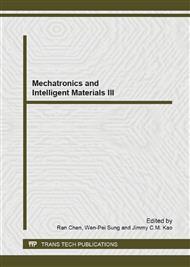p.932
p.937
p.941
p.946
p.950
p.957
p.963
p.968
p.972
Research on Electronic Differential Control Method of Electric Vehicle with Motorized Wheels Based on Adhesion Coefficient
Abstract:
This paper presents an electronic differential control strategy based on equal adhesion coefficient, it makes electric vehicle (EV) with two dual-motorized-wheels achieve differential by distributing and controlling the driving torque. First, six degree-of-freedom (6-DOF) vehicle dynamic model was set up and electronic differential system based on permanent magnet synchronous motor (PMSM) vector control was designed, then the simulation of differential control method with Matlab/Simulink was performed. The results show that when the high-speed vehicle steering in the low road adhesion coefficient, the electronic differential control method based on the principle of equal adhesion coefficient can keep two driving wheels’ adhesion coefficient utilization ratio the same, avoiding single wheel skid and improving the steering stability.
Info:
Periodical:
Pages:
950-956
Citation:
Online since:
June 2013
Authors:
Price:
Сopyright:
© 2013 Trans Tech Publications Ltd. All Rights Reserved
Share:
Citation:


